IIT JAM Biology 2022
Previous Year Question Paper with Solution.
1. Which of the following is involved in innate immune response in higher mammals?
(a) T cell antigen receptor
(b) B cell antigen receptor
(c) Toll-like receptor
(d) Major histocompatibility complex-II moleule
Ans. (c)
Sol. Toll-like receptors are a class of proteins that play a key role in the innate immune system. They are single-pass membrane-spanning receptors usually expressed on sentinel cells such as macrophages and dendritic cells, that recognize structurally conserved molecules derived from microbes.
2. Which among the following belongs to the family "Retroviridae"?
(a) Human Immunodeficiency virus
(b) Ebola virus
(c) Dengue virus
(d) Influenza virus
Ans. (a)
Sol. The human immunodeficiency virus (HIV) is grouped to the genus Lentivirus within the family of Retroviridae, subfamily Orthoretrovirinae [1]. On the basis of genetic characteristics and differences in the viral antigens, HIV is classified into the types 1 and 2 (HIV-1, HIV-2).
3. Which of the following is a glycolipid?
(a) Cerebroside
(b) Phosphatidylcholine
(c) Phosphatidylserine
(d) Cardiolipin
Ans. (a)
Sol. Cerebrosides, the simplest neutral glycolipids/glycosphingolipids, have a single sugar that is linked to ceramide. Cerebrosides are thus ceramide monosaccharides.
4. Which of the following bacterial component contains "dipicolinic acid"?
(a) Endospore
(b) Capsule
(c) Flagella
(d) Pili
Ans. (a)
Sol. Dipicolinic acid (DPA) is a major component of bacterial endospores, comprising 5-15% of the spore dry weight, and is important for spore stability and resistance properties.
5. The fossilization process in which mineral rich water penetrates through the pores of decomposed organic matter is known as ......................
(a) Carbonization
(b) Chemical fossilization
(c) Petrifaction
(d) Microfossilization
Ans. (c)
Sol. The most common method of fossilisation is petrification through a process called permineralisation. After a shell, bone or tooth is buried in sediment, it may be exposed to mineral-rich fluids moving through the porous rock material and becomes filled with preserving minerals such as calcium carbonate or silica.
6. A random fluctuation is gene frequency is called
(a) Genetic drift
(b) Genetic load
(c) Panmixis
(d) Genetic shift
Ans. (a)
Sol. Genetic drift describes random fluctuations in the numbers of gene variants in a population. Genetic drift takes place when the occurrence of variant forms of a gene, called alleles, increases and decreases by chance over time. These variations in the presence of alleles are measured as changes in allele frequencies.
7. The number of "Barr Bodies" present in a somatic cell of a woman suffering from Turner syndrome is .......................
(a) 0
(b) 1
(c) 2
(d) 3
Ans. (a)
Sol. Most commonly, a female with Turner syndrome has only 1 X chromosome. Others may have 2 X chromosomes, but one of them is incomplete. Sometimes, a female has some cells with 2 X chromosomes, but other cells have only 1.
So zero Barr body present
8. Which of the following are produced by Mangrove trees to survive in the waterlogged swampy forests?
(a) Trichomes
(b) Pneumatophores
(c) Spermatophores
(d) Cambia
Ans. (b)
Sol. Pneumatophores, commonly found in mangrove species that grow in saline mud flats, are lateral roots that grow upward out of the mud and water to function as the site of oxygen intake for the submerged primary root system.
9. Indeterminate growth in plants in due to the presence of perpetually undifferentiated tissues, called us .........................
(a) Tracheids
(b) Meristems
(c) Parenchyma
(d) Sclerenchyma
Ans. (b)
Sol. Meristems contribute to both primary (taller/longer) and secondary (wider) growth. Primary growth is controlled by root apical meristems or shoot apical meristems, while secondary growth is controlled by the two lateral meristems, called the vascular cambium and the cork cambium.
10. The osmotic potential  of pure water is ................. MPa.
of pure water is ................. MPa.
(a) –1
(b) 0
(c) 0.1
(d) 10
Ans. (b)
Sol. Osmotic potential is zero in pure water.
11. Bacteria containing a tuft of flagella that comes out from one pole is called .................
(a) Lophotrichous
(b) Peritrichous
(c) Monotrichous
(d) Amphitrichous
Ans. (a)
Sol. Lophotrichous - In this, Tuft of flagella extends from one end or both ends of the cell. These are also known as polar flagellum and can rotate clockwise and anti-clockwise. e.g., Spirillum volutans. Peritrichous - In this, Multiple flagella are randomly distributed over the entire bacterial cell.
12. Which of the following activity is associated with Klenow fragment?
(a) 5'-3' exonuclease activity
(b) 5'-3- endonuclease activity
(c) Polymerase activity
(d) 3'-5- endonuclease activity
Ans. (c)
Sol. DNA Polymerase I, Large (Klenow) Fragment is a proteolytic product of E. coli DNA Polymerase I which retains polymerization and 3'– 5' exonuclease activity, but has lost 5'– 3' exonuclease activity
13. A frameshift mutation is caused by ......................
(a) 5-Bromouracil
(b) Acridine
(c) Glutathione
(d) Hypoxanthine
Ans. (b)
Sol. At the molecular level, acridines have been shown to cause frameshift mutations of both the addition and deletion types, a characteristic which has been of tremendous help in elucidating the nature of the genetic code.
14. The zone of a pond system where respiration is more than production is called as ..................
(a) Limnetic zone
(b) Littoral zone
(c) Epilimnion zone
(d) Benthic zone
Ans. (d)
Sol. The benthic zone begins at the shore and extends to the bottom of a waterbody. It is found all over the world. Only a small amount of sunlight reaches this zone. This zone is characterized by low temperature and high pressure. So respiration is high than ATP production.
15. An organism that causes obstruction of lymphatic system in humans is .................
(a) Borrelia burgdorferi
(b) Brucella abortus
(c) Yersinia pestis
(d) Wuchereria bancrofti
Ans. (d)
Sol. Wuchereria bancrofti is a filarial (arthropod-borne) nematode (roundworm) that is the major cause of lymphatic filariasis. It is one of the three parasitic worms, together with Brugia malayi and B. timori, that infect the lymphatic system to cause lymphatic filariasis.
16. A man having a dominant genetic trait (TT genotype) can taste phenylthiocarbmide (PTC), marries a woman who cannot taste PTC. The PTC tasting abilitry of their biological son and daughter is
(a) Son taster, Daughter non-taster
(b) Daughter taster; Son non-taster
(c) Both are non-tasters
(d) Both are tasters
Ans. (d)
Sol. TT (PTC taster) × tt (PTC Non-taster)
All progeny will be Tt (PTC taster) so both sons and daughters will be PTC (Phenyl-thiocarbmide) taster.
17. Which of the following enzymes is absent in a person suffering from Alkaptonuria?
(a) Tyrosinase
(b) Homogentisic acid oxidase
(c) Catechol dioxygenase
(d) Phenylalanine hydroxylase
Ans. (b)
Sol. Alkaptonuria is a rare genetic metabolic disorder characterized by the accumulation of homogentisic acid in the body. Affected individuals lack enough functional levels of an enzyme required to breakdown homogentisic acid. Affected individuals may have dark urine or urine that turns black when exposed to air.
18. The bacterium that can tolerate high concentrations of salt and also ferment mannitol is
(a) Staphylococcus aurenus
(b) Staphylococcus epidermis
(c) Streptococcus pyrogenes
(d) Serratia marcescens
Ans. (a)
Sol. Staphylococcus aureus is a salt-tolerant eubacterium, and most strains grow well in a high-NaCl concen - tration media containing as much as 15% NaCl (1). Certain strains, however, are evidently sensitive to NaCl and exhibit autolysis in the presence of a relatively low concentration of NaCl
19. Match the following

(a) P-1, Q-3, R-4, S-2
(b) P-4, Q-3, R-1, S-2
(c) P-2, Q-3, R-1, S-4
(d) P-3, Q-4, R-1, S-2
Ans. (b)
Sol. Streptomycin–Inhibits binding of formyl methionine tRNA to ribosome
Cycloheximide–Inhibits peptidyl transferase activity of 60S subunit
Fifamycin–Inhibits peptiduyl transferase activity of 60S subunit
20. The major product formed in the given reaction is
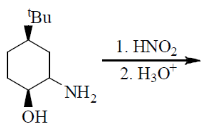
(a) 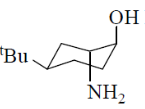
(b) 
(c) 
(d) 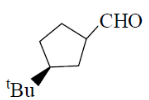
Ans. (b)
Sol. 
21. DNA gyrase can
(a) cut single-stranded DNA
(b) relax supercoiled DNA
(c) introduce negative supercoiling in DNA
(d) not utilize ATP
Ans. (c)
Sol. DNA gyrase is unique among topoisomerases in its ability to introduce negative supercoils into closed circular DNA. We have demonstrated that deletion of the C-terminal DNA-binding domain of the A subunit of gyrase gives rise to an enzyme that cannot supercoil DNA but relaxes DNA in an ATP-dependent manner.
22. The stationary phase of cation-exchange chromatography can be
(a) DEAE-cellulose
(b) CM-cellulose
(c) Sephadex G-50
(d) Heparin-Sepharose
Ans. (b)
Sol. CM Cellulose products are used in protein chromatography, ion exchange chromatography and cation exchange media. CM Cellulose has been used in studies to inform the suppressed proliferation of hepatoma and leukemic cells and the inhibition of the human immunodeficiency virus type 1 (HIV-1).
23. Components of a Transmission Electron Microscope are
(a) Electron gun, objective lens, positron beam, projector lens
(b) Neutron beam, projector lens, objective lens, evacuated tube
(c) Electron beam, projector lens, objective lens, condenser lens
(d) X-ray beam, projector lens, objective lens, condenser lens
Ans. (c)
Sol. Electron beam, projector lens, objective lens, condenser lens
24. In a honey bee population, the workers are infertile but protect the queen from intruders and help in reproduction. This is an example of
(a) K selection
(b) Sexual selection
(c) Kin selection
(d) Disruptive selection
Ans. (c)
Sol. The solution, called kin selection theory, resolves the issue of worker bee sterility by including not only an individual's offspring in the calculation of its fitness but also the survival and reproduction of the individual's relatives.
25. For an enzyme following Michaelis-Menten kinetics, when [S] = KM then, the velocity v is
([S] is substrate concentration, KM is Michaelis constant, Vmax is maximal velocity)
(a) [S] × Vmax
(b) 0.75 × Vmax
(c) 0.5 × Vmax
(d) KM × VMax
Ans. (c)
Sol. The higher the Kcat is, the more substrates get turned over in one second. Km is the concentration of substrates when the reaction reaches half of Vmax. A small Km indicates high affinity since it means the reaction can reach half of Vmax in a small number of substrate concentration.
26. The net equation for aerobic glycolysis is
(a) 
(b) 
(c) 
(d) 
Ans. (*)
Sol. Aerobic respiration is the aerobic catabolism of nutrients to carbon dioxide, water, and energy, and involves an electron transport system in which molecular oxygen is the final electron acceptor. The overall reaction is: C6H12O6 + 6O2 yields 6CO2 + 6H2O + energy (as ATP).
27. In the electron transport chain, flavin mononucleotide (FMN) can adopt ................ as the highest oxidation state and is capable of accepting or donating ................... electrons, respectively.
(a) 2; 2 or 3
(b) 2; 1 or 2
(c) 3; 2 or 3
(d) 3; 1 or 2
Ans. (d)
Sol. Its oxidized form, FMN, can accept two electrons and a proton in the form of a hydride ion, as well as an additional proton. In other words, FMN accepts H– and H+ to become FMNH2.
28. In bacteria, the  factor that plays a major role in transcription during the stationary phase is
factor that plays a major role in transcription during the stationary phase is
(a) 
(b) 
(c) 
(d) 
Ans. (*)
Sol. The sigma factor sigma 70 of E. coli RNA polymerase acts not only in initiation, but also at an early stage of elongation to induce a transcription pause, and simultaneously to allow the phage lambda gene Q transcription antiterminator to act.
29. A rise in cytosolic calcium ion concentration just after fertilization in a sea urchin egg leads to
(a) Formation of fertilization envelope
(b) Acrosomal reaction
(c) Formation of vegetal pole
(d) Formation of animal pole
Ans. (a)
Sol. The fertilization calcium wave in a sea urchin (Lytechinus pictus) egg. The calcium wave initiates at the point of sperm entry and crosses the egg as a tsunami-like wave, traversing the egg in around 20s. Calcium concentrations were visualized using the calcium indicator calcium green dextran and confocal microscopy.
30. In a nephron, ................. follows the ascending limb of the "loop of Henle".
(a) Descending limb
(b) Distal tubule
(c) Collecting tubule
(d) Proximal tubule
Ans. (b)
Sol. The term distal tubule has been used by anatomists to denote the region of the nephron that extends downstream from the macula densa to the confluence of another tubule (i.e., the collecting system). It includes two nephron segments, the DCT and the connecting tubule (CNT).
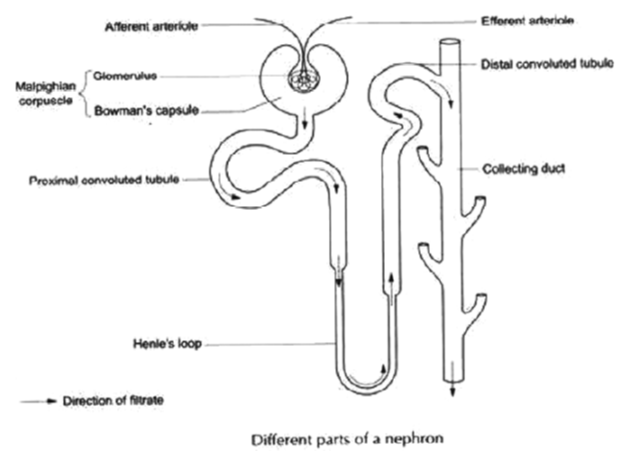
31. Transpirational pull that extends down to the roots in plants can be interrupted by
(a) Process of cavitation
(b) Process of gravitation
(c) Formation of water vapor pockets
(d) Positive pressure in xylem sap
Ans. (a, c)
Sol. Cavitation decreases the hydraulic conductance of the xylem and has, therefore, detrimental effects on plant water balance. However, cavitation is also hypothesized to relieve water stress temporarily by releasing water from embolizing conduits to the transpiration stream.
As well as water vapour pocket affect transpiration pull
32. Transfer of plasmids into animal cells can be achieved by
(a) Electroporation
(b) Liposome-mediated process
(c) Calcium chloride treatment
(d) Sucrose treatment
Ans. (a, b, c)
Sol. Electroporation, Liposome-mediated process, Calcium chloride treatment are major technique for gene transfer in animal cells.
33. Archaeal cell membranes contain lipids that are
(a) Ether linked
(b) Ester linked
(c) Branched alkyl chain
(d) Linear alkyl chain
Ans. (a, c)
Sol. Ether linked, Branched alkyl chain
34. Which of the following are producers in an ecological system?
(a) Macrophytes
(b) Phytoplanktons
(c) Zooplanktons
(d) Cyanobacteria
Ans. (a, b, d)
Sol. Macrophytes, Phytoplanktons, Cyanobacteria
35. Which of the following acts as wound hormones in plants?
(a) Ethylene
(b) Cytokinins
(c) Abscisic acid
(d) Dextrin
Ans. (a, b, c)
Sol. Ethylene, Cytokinins, Abscisic acid
36. The enriched media used to facilitate the growth of fastidious microorganisms are
(a) Selenite F broth
(b) Blood agar
(c) Chocolate agar
(d) Loeffler's serum
Ans. (b, c, d)
Sol. Blood agar, Chocolate agar, Loeffler's serum
37. Match the bacterial structure to function

(a) (i)-B, (ii)-D
(b) (i)-D, (ii)-A
(c) (i)-C, (ii)-B
(d) (i)-D, (ii)-C
Ans. (b, d)
Sol. (i) Cell wall–Protection from osmotic lysis, Virulence factor,
(ii) Glycocalux–Attachment to surfaces
38. Identify the correct pairs

(a) (i)-D
(b) (i)-B
(c) (i)-A
(d) (i)-C
Ans. (a, d)
Sol. (i) Halophile–Grows optimal at 67°C, Grows optimal at hich saline conditions
39. A single copy of an allele in sickle-cell heterozygous individuals reduces the frequency and severity of malaria. The reason for this is
(a) Low oxygen binding capacity of hemoglobin
(b) Single amino acid substitution in hemoglobin deforms the red blood cells
(c) Abnomal hemoglobin in toxic for malaria parasite
(d) Malaria parasite escapes the deformed red blood cells
Ans. (a, b)
Sol. Low oxygen binding capacity of hemoglobin, Single amino acid substitution in hemoglobin deforms the red blood cells
40. The correct statement/s for biomolecular nucelophilic substitution reactions is/are
(a) It goes through a carbocation formation
(b) There is an inversion of configuration if the reacting center is chiral
(c) Reaction is enhanced when carried out in polar solvents
(d) The reaction intermediate is trigonal bipyramidal
Ans. (b, d)
Sol. In humans, each cell normally contains 23 pairs of chromosomes, for a total of 46. Twenty-two of these pairs, called autosomes, look the same in both males and females. The 23rd pair, the sex chromosomes, differ between males and females.
41. A deck of ten cards is given to you as shown below in the figure. One card is drawn at random from this deck. The probability of selecting a number less than 9 is ................. (to one decimal place)
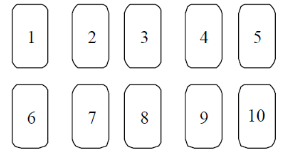
Ans. (0.8 to 0.8)
Sol. 1-10
p(E) = 8/10 = 0.8
42. The average of all positive even integers less than or equal to 40 is ..............
Ans. (21)
Sol.
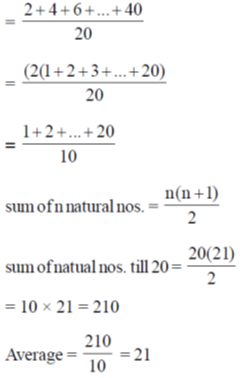
43. The smallest positive (non-zero) integer "n" for which the expression  = 1 holds true. is ..........
= 1 holds true. is ..........
Ans. (4)
Sol.
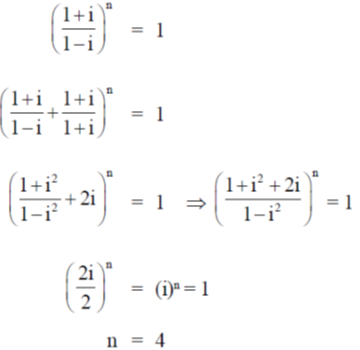
44. Given that

Ans. (1)
Sol. 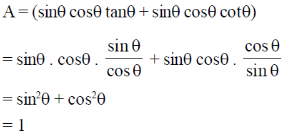
45. An object is placed at the principal focus of a concave lens of focal length 10 cm. The image will be formed at ............ cm, between the optical center and the focus of the lens on the same side of the object.
Ans. (-5 or 5)
Sol.
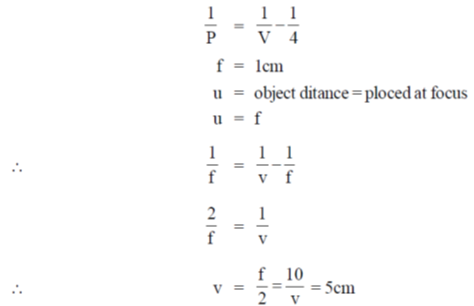
46. What is the maximum number of hydrogen bonds that a water molecule can make in the liquid state?
Ans. (4)
Sol. 4 hydrogen bonds can be formed by water molecule in the liquid state.
47. How many pairs of autosomal chromosomes are there in normal humans/
Ans. (22)
Sol. There are 22 pairs of autosomal chromosomes in each normal human cells.
48. Calculate the temperature (in K) at which the resistance of a metal becomes 20% more than its resistance at 300 K. The value of the temperature coefficient of resistance for this metal is 2.0 × 10–4/K.
Ans. (1300)
Sol. 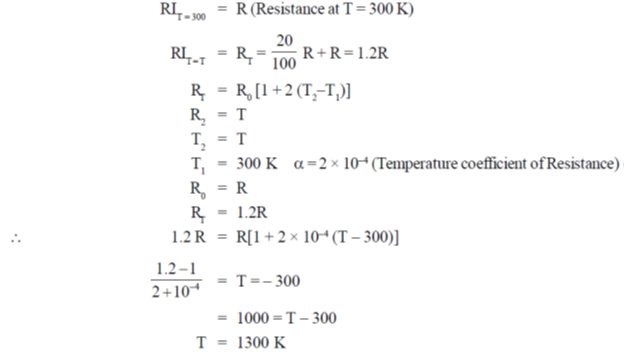
49. In the 1H NMR spectrum of ethanol at 400 MHz, the methyl group splits into .................. number of peaks.
Ans. (3)
Sol. In the 1H NMR spectrum of ethanol at 400 MHz, the methyl group splits into 3 peaks.
50. In a denaturing polyacrylamide gel electrophoresis experiment, pure intact adult human hemoglobin will yield ................... (number) bands.
Ans. (2)
Sol. In a denaturing polyacrylamide gel electrophoresis experiment, pure intact adult human hemoglobin will yield 2 bands.
51. A man throws a ball vertically up in the air with an initial velocity v1 such that it reaches a height of 12m with a speed of 12m/s. If he throws the sameball vertically up with an initial velocity v2 such that it reaches a maximum height of 12m. Calculate v1/v2. (up to 2 decimal places)
Ans. (1.25 to 1.30)
Sol.

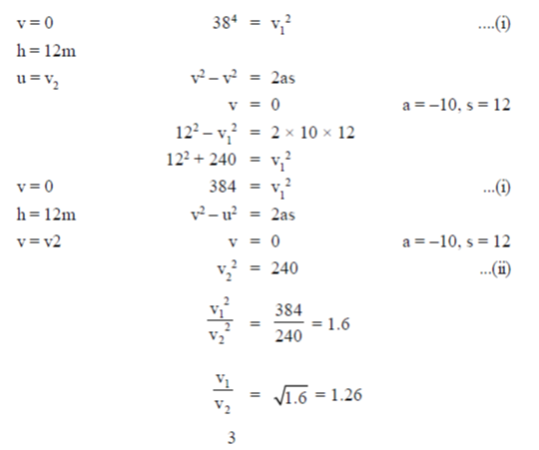
52. What is the acceleration due to gravity (m/s2) on the surface of a planet if its radius is 1/4th that of earth and its mass is 1/80th that of earth? Assume that the gravity on the surface of the earth is 10m/s2.
Ans. (2)
Sol.
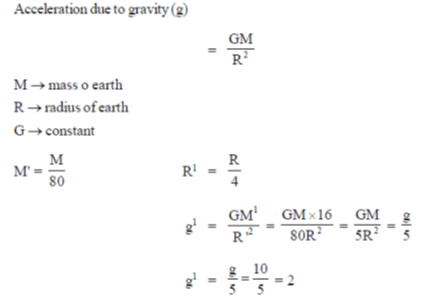
53. In a randomly mating pouplation, the frequency of 'A' allel is 0.7. What is the frequency of 'An' genotype in the next generation according to Hardy-Weinberg's law? (upt to two decimal places)
Ans. (0.41 to 0.43)
Sol. In a randomly mating pouplation, the frequency of 'A' allel is 0.7.
As per Hardy weinberg equation, P + Q = 1
P = 0.7
Q = 1 – 0.7
Q = 0.3
Also P2 + 2PQ + Q2 = 1
where 2PQ represent heterozygous frequency
2 × 0.7 × 0.3 = 0.42
54. The potential difference to accelerate an electron was quadrupled. By what factor does the de Broglie wavelength of the electron beam change?
(a) 1, 2 and 2
(b) 2, 2 and 1
(c) 2, 1 and 2
(d) 1, 2 and 1
Ans. (0.5 or 2)
Sol.
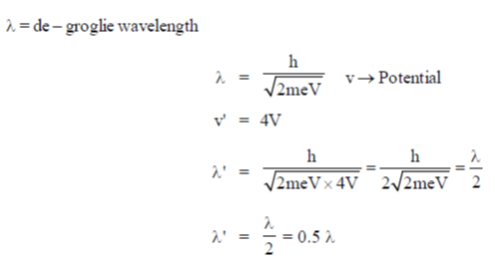
55. A 500 nm light is used for imaging in a confocal microscope. What will be the best resolution (in nm) of this microscope?
Ans. (180 to 250)
Sol. A 500 nm light is used for imaging in a confocal microsope 180 to 250 nm will be the best resolution (in nm) of this microscope?
56. Assuming the moelcule shown below is aromatic, the value of "n" according to "Huckel's" is
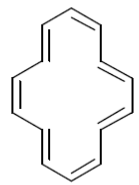
Ans. (3)
Sol. Assuming the moelcule shown below is aromatic, the value of "n" according to "Huckel's" is
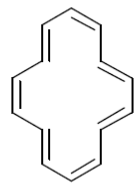
There are 7 double bonds in given structure. Hence, there are 14𝝅 electrons.
As per Huckel's rules, 4n + 2 = number of 𝝅 electrons.
4n + 2 = 14
4n = 14 – 2
4n = 12
n = 12/4 = 3
57. In an actively growing population from a single bacterium, 1,048,576 cells are present after 20th generation. How many cells were there in 5th generation?
Ans. (32)
Sol. Total number of bacterial cells after n generations = initial number of bacterial cells (n0) × 2n
1,048,576 = n0 × 220
n0 = 1,048576/1048576
n0 = 1
Total number cells after 5 generations = 1 × 25 = 32 cells.
58. A double stranded DNA molecule of total 5000 base pairs long, has a melting temperature of 85°C. What will be the % AT base pairs in this sample? (up to one decimal place)
Ans. (61.6 to 61.8)
Sol. 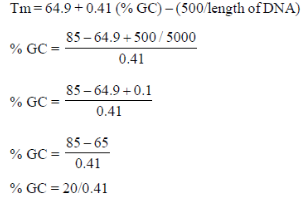

59. How many GTP molecules are required for the translocation of tRNA from P site to E site during translation elongation process in bacteria?
Ans. (1)
Sol. 1 GTP molecule is required for the translocation of tRNA from P site to E site during translationelongation process in bacteria.
60. Amongst the molecules given below, the total number of molecules that have at least one sp2 hybridized atom is ....................
C6H6, NO2, BF3, H2O2, SO2, C2H2, L-Tryptophan
Ans. (5)
Sol. Amongst the molecules given below, the total number of molecules that have at least one sp2 hybridized atom is 5.
C6H6, NO2, BF3, H2O2, SO2, C2H2, L-Tryptophan
